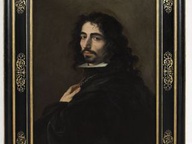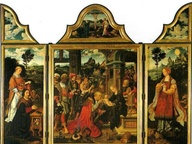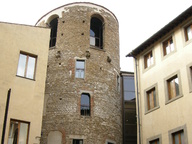Deianeira and the Centaur Nessus
According to Ovid (Metamorphoses IX,101-134), Hercules marries Deianeira after wrestling the river-god Achelous for her hand. Later, during the couple's travels, Hercules entrusts his bride to the centaur Nessus, who offers her passage across the Evenus river. The centaur falls in love with the princess and tries to abduct her, but Hercules shoots him with an arrow poisoned with the blood of the Hydra. The subject of this large painting is taken from Ovid's Metamorphoses. The centaur offers his services to Hercules in transporting his wife Deianeira across a swollen river. But as Nessus moves away into the turbulent water, he tries to abduct the young woman. Hercules detects the ruse and shoots an arrow at the centaur, mortally wounding him.
Here the painter chooses the scene of the abduction; Hercules, alone on the opposite shore in the background on the right, plays a minor role in the composition. All the attention is focused on the taught muscular tension of the centaur's body. His bold, triumphant face contrasts with Deianeira's fright. The positioning of the figures' arms imparts vigor to the scene, accentuated further by the flowing movement of the brilliantly colored drapery of Deianeira's robes. Guido Reni worked for twelve years in Rome before becoming permanently established in Bologna in 1614. In the Eternal City, the painter was influenced by classical statuary and the work of Raphael. The vigorous treatment of the centaur's torso, as well as the anatomical detail, attest to these influences. However, the twisting of the bodies, the exaltation of the gestures and the supple rhythm of the drapery evoke the baroque preoccupation with dynamism.
COMMENTI
LE OPERE
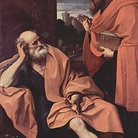 San Pietro e San Paolo
Olio su tela
San Pietro e San Paolo
Olio su tela
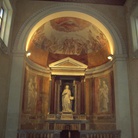 Oratorio Santa Silvia
Edificio
Oratorio Santa Silvia
Edificio
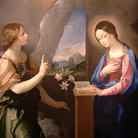 Annunciazione
Olio su tela
Annunciazione
Olio su tela
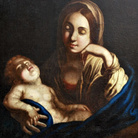 Madonna col bambino dormiente
Olio su tela
Madonna col bambino dormiente
Olio su tela
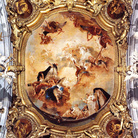 Cappella di San Domenico - Apoteosi di San Domenico
1613 | Affresco
Cappella di San Domenico - Apoteosi di San Domenico
1613 | Affresco
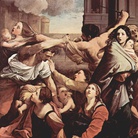 Strage degli innocenti
Olio su tela | 268 x 170 cm.
Strage degli innocenti
Olio su tela | 268 x 170 cm.
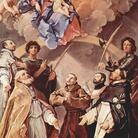 Pala della peste - Madonna col Bambino in gloria e i santi Petronio, Francesco, Ignazio, Francesco Saverio, Procolo e Floriano
Olio su tela | 382 x 242 cm.
Pala della peste - Madonna col Bambino in gloria e i santi Petronio, Francesco, Ignazio, Francesco Saverio, Procolo e Floriano
Olio su tela | 382 x 242 cm.
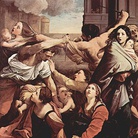 San Carlo Borromeo con angeli
1613 | Olio su tela
San Carlo Borromeo con angeli
1613 | Olio su tela
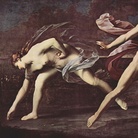 Atalanta e Ippomene
1620 | Olio su tela
Atalanta e Ippomene
1620 | Olio su tela
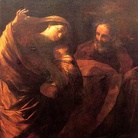 Fuga in Egitto
Olio su tela | 128 x 159 cm.
Fuga in Egitto
Olio su tela | 128 x 159 cm.
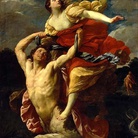 Nesso rapisce Deianira
1617 | Olio su tela | 193 x 239 cm.
Nesso rapisce Deianira
1617 | Olio su tela | 193 x 239 cm.
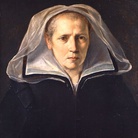 Ritratto di Gentildonna
1615 | Olio su tela | 55 x 65 cm.
Ritratto di Gentildonna
1615 | Olio su tela | 55 x 65 cm.
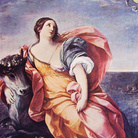 Il Ratto d' Europa
1637 | Olio su tela | 129 x 177 cm.
Il Ratto d' Europa
1637 | Olio su tela | 129 x 177 cm.
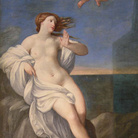 Arianna
Olio su tela | 150 x 220 cm.
Arianna
Olio su tela | 150 x 220 cm.
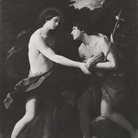 Incontro di Gesù e Giovanni Battista
Olio su tela
Incontro di Gesù e Giovanni Battista
Olio su tela
Map
Works in Italy
Works around the world
